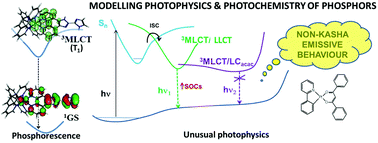Computational insights into the photodeactivation dynamics of phosphors for OLEDs: a perspective
Abstract
A detailed molecular-level understanding of both the photoluminescence and electroluminescence properties of transition-metal (TM) complexes used as emitters in organic light-emitting diodes (OLEDs) is vital to pave the way to the next generation of OLEDs materials. In this Perspective, we present recent ab initio and density-functional theory (DFT) results, including or not spin–orbit couplings (SOCs), focused on disentangling competing photodeactivation mechanisms of radiative and non-radiative nature in target Pt(II) and Ir(III) complexes. These complexes are the most widespread organo-transition metal compounds for OLEDs applications. We address their photodeactivation dynamics, their temperature-dependent photoluminescence kinetics and some unusual photophysical properties (such as, e.g., dual photoluminescence or non-Kasha emissive behaviour). In addition, we discuss the pending questions regarding the photophysics of these systems, which will require the interplay between theoretical and experimental efforts.

- This article is part of the themed collection: Luminescent Complexes and Materials for Light-Emitting Devices

 Please wait while we load your content...
Please wait while we load your content...